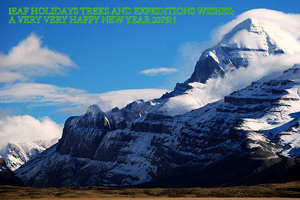Western world contain four seasons. But, Nepal contains six seasons. Two additional seasons in Nepal are rainy season and pre-winter season. The six seasons are listed as below:
1. Spring (Basanta Ritu)
2. Summer (Grishma Ritu)
3. Rainy (Barsha Ritu)
4. Autumn (Sharad Ritu)
5. Pre-winter (Hemanta Ritu)
6. Winter (Shishir Ritu)
Nepali seasons are two months long. Spring season (Basanta Ritu) spans into Chaitra and Baisakh (mid-march to mid-may), summer season (Grishma Ritu) spans into Jestha and Aashad (mid-May to mid-July), rainy (Barsha Ritu) starts in shrawan and ends in bhadra (mid-July to mid-September) , Autumn (Sharad Ritu) starts in Ashwin and ends in kartik (mid-September to mid-November) , Pre-winter (Hemanta Ritu) starts in mangsir and ends in poush (mid-November to mid-January) and winter (Shishir Ritu) starts in magh and ends in falgun (mid-January to mid-march) .
The temperature in spring is not too cold and not too hot, spring season is also windy season. Summer season is the hottest season at all, the flowers fall down and fruits grown in trees. For agriculture summer season is the best season to grow crop. At rainy season, extensive rainy days are observed. The rain provides irrigation to agricultural crops and recharge ground water. Whereas, autumn season is the season of festival. The temperature goes down in autumn season and it is just right for the celebration. Pre-Winter season is the season of working again. The temperature starts to fall down and people prepare themselves for the winter. And lastly here comes the winter season which is the coldest season in the year. Cold seasons starts by the end of pre-winter and end by the end of winter. Snow falls in areas of high altitude during winter.



